It looks like you're using an Ad Blocker.
Please white-list or disable AboveTopSecret.com in your ad-blocking tool.
Thank you.
Some features of ATS will be disabled while you continue to use an ad-blocker.
14
share:
The tradition of 'riding the goat' often seen in Neo-classical art in connection with the Bachanaal is not the easiest to understand though relatively
easy to trace, as it goes back to Babylonian omen interpretations with regards to riding the goatfish, Capricorn.
Babylonian Capricorn
The formulation of the Goatfish in and of itself is mysterious, though i think the above article has it about right, but it is more likely that the meaning was obscure even in the 3rd millenium Bc and ancient, rather than newly formulated as the author considers. As he notes all constellations in that watery quadrant of the skies have some relationship to Enki, but to identify Enki as a goat is unusual though seemingly Dilmun seals which invariably concern themselves with Enki and Ninhursag do appear to represent him thus.
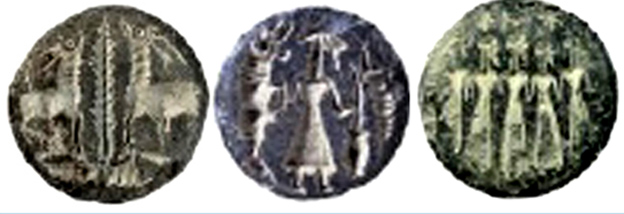
Identification of Enki as goat is somewhat complicated by the wearing also of a turtle carapace on the head normally, as Enki was God of turtles, Apkallu and scribes, a skullcap.

Generally also Dilmun seals show a concern with Enki and Ninhursaga, Goddess of Plants, raising a standard or plant of life of a Celestial nature in the general direction of Sirius, passing firstly through Cetus the sea serpent and Andromeda, the stag, from the field of Pegasus, and it is in their mythos were Enki acts as a goat in eating all the eight sacred plants associate with the spider Goddess Uttu, represented by Canis Major and the plants of inner illumination and healing

Enki thus somewhat encroached on the perogative of Ninhursaga to know the secrets of plants and she is angry with him, though they are reconciled and she helps him relieve the burden of consuming them by creating eight God and Goddesses from his body. The transformation is a complex one but the spider Goddess Uttu in symbolism translates to the inner illumination of the light of the winged disk, and her eight aspects became the containers of the eight mystical plants of the mysteries.
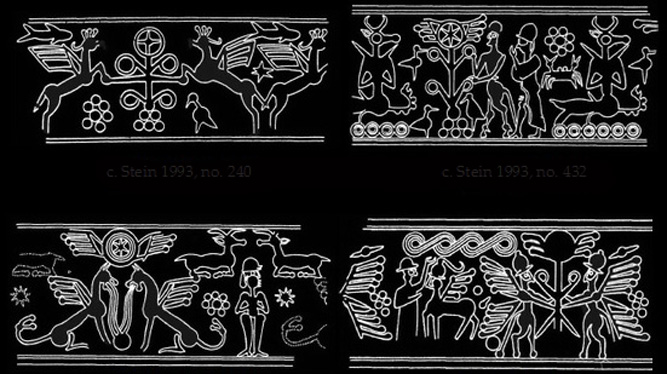
The eight plants then that the goat ate properly belonged to the understanding of women, and for this reason it was Tašmetu or Nanaya that was the Mistress of that constellation with regards to the role of plants in beautification and wisdom, as Nanaya is the physical incarnation of Inanna this carried through into her seven nymph attendants.
Tasmetu
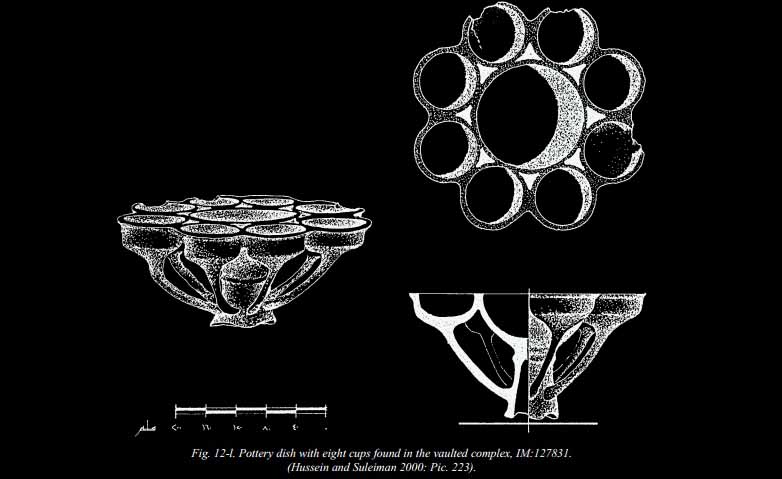
The association with Capricorn will always relate to rebirth and healing as noted, the re-emergence of the Sun from the dark river of the underworld, the Abzu of Enki in conjunction with the secret lore of plants, association of Enki with the goatfish is also maintained by the nearby Swine constellation representing the rebirth of his son Dumuzid, who again consumes everything and takes Nanaya as consort in Urukian tradition
In the Neo-classical period of course these mysteries were represented as they had developed in Greek tradition in connection with the likes of Pan and Hermes, though also the Hebrews contributed their Ea/Yah based understandings, but the Sumerian are certainly the oldest and most intriguing.
In the whole corpus of celestial omens there are only a handful of omens that actually concern the Goatfish. One of the few to survive describes the presence of Mars:
‘If Mars rides the Goatfish: devastation of Eridu, its people will be annihilated’.
The negative prediction here is somewhat unexpected as Mars is considered to have its exaltation in the Goatfish. The circumstance of Mars ‘riding’ the Goatfish – whatever that might mean – probably indicates some sort of behaviour that is thought to be outside the normal parameters of the planet’s behaviour, and in the minds of astrologers anything acting outside its ‘normal’ pattern of behaviour is a sign of ill portent.
‘If Venus approaches the (Goat)Fish: there will be a defeat in the land’ – Venus approaches the Goatfish.
Babylonian Capricorn
The formulation of the Goatfish in and of itself is mysterious, though i think the above article has it about right, but it is more likely that the meaning was obscure even in the 3rd millenium Bc and ancient, rather than newly formulated as the author considers. As he notes all constellations in that watery quadrant of the skies have some relationship to Enki, but to identify Enki as a goat is unusual though seemingly Dilmun seals which invariably concern themselves with Enki and Ninhursag do appear to represent him thus.

The compound nature of the Goatfish is best understood in terms of the symbolism that we have already examined. In short, I would argue that it is essentially a combination of the Stag and the Fish – the Stag representing the renewal of the sun’s power at midwinter, while the Fish acts as a guardian
Identification of Enki as goat is somewhat complicated by the wearing also of a turtle carapace on the head normally, as Enki was God of turtles, Apkallu and scribes, a skullcap.

we can now postulate that the goat-element of the Goatfish is an equivalent symbol to the Stag, which was an archaic constellation closely associated with the rebirth of the sun. Likewise, its fish-element is either derived from Anunitum or the Fish-constellation, whose astral lore reveals that the mythical fish was thought to rescue the sun from the watery depths of winter and guide it safely towards dry land
Generally also Dilmun seals show a concern with Enki and Ninhursaga, Goddess of Plants, raising a standard or plant of life of a Celestial nature in the general direction of Sirius, passing firstly through Cetus the sea serpent and Andromeda, the stag, from the field of Pegasus, and it is in their mythos were Enki acts as a goat in eating all the eight sacred plants associate with the spider Goddess Uttu, represented by Canis Major and the plants of inner illumination and healing

The close affinity between Enki and the Goatfish is manifest on numerous entitlement stones where the Goatfish is often combined with other astral symbols associated with him such as the turtle or the Ram-headed staff
Despite the strong affinity to Enki, astrology texts list the regent of the Goatfish as the little-known goddess Tašmetu. Her name is derived from the Akkadian word šamû, and can be roughly translated as ‘the granter of requests’
Enki thus somewhat encroached on the perogative of Ninhursaga to know the secrets of plants and she is angry with him, though they are reconciled and she helps him relieve the burden of consuming them by creating eight God and Goddesses from his body. The transformation is a complex one but the spider Goddess Uttu in symbolism translates to the inner illumination of the light of the winged disk, and her eight aspects became the containers of the eight mystical plants of the mysteries.

Tašmetu shares aspects with Nanaya, particularly in her associations with sex and wisdom. Tašmetu is mentioned in association with both sexual attractiveness and wisdom in first-millennium prayers from the city of Kalhu. The same prayer also describes Tašmetu as a "goddess of sex appeal and sensuality" and "mistress of the lovers in the inhabited world"
The eight plants then that the goat ate properly belonged to the understanding of women, and for this reason it was Tašmetu or Nanaya that was the Mistress of that constellation with regards to the role of plants in beautification and wisdom, as Nanaya is the physical incarnation of Inanna this carried through into her seven nymph attendants.
Tasmetu

The association with Capricorn will always relate to rebirth and healing as noted, the re-emergence of the Sun from the dark river of the underworld, the Abzu of Enki in conjunction with the secret lore of plants, association of Enki with the goatfish is also maintained by the nearby Swine constellation representing the rebirth of his son Dumuzid, who again consumes everything and takes Nanaya as consort in Urukian tradition
Although the precise location of the Swine is still a matter of debate, it isvery likely that his star is to be found in the rebirth sector of the star-map as it is attributed to the god Damu, whose name can be translated as the ‘child’
In the Neo-classical period of course these mysteries were represented as they had developed in Greek tradition in connection with the likes of Pan and Hermes, though also the Hebrews contributed their Ea/Yah based understandings, but the Sumerian are certainly the oldest and most intriguing.
edit on Kam430109vAmerica/ChicagoMonday2030 by Kantzveldt because: (no reason given)
Trying to figure out some of this old stuff is kind of hard. They perceived things different than us. There is usually something behind this old
text and statues, but the origination could also have been a misconception made by coincidence long ago too.
I believe all these ancient creations had some sort of reason for being there, some may even have been passed down verbally for hundreds of generations. People have been talking for tens of thousands of years at a minimum. Hominids may have been communicating with each other for millions of years. Some of the stuff about the old gods could go back many thousands of years earlier than our first evidence and be based on some beings that once lived and made an impression upon mankind at the time. Of course, every culture had to babble the tongue and make their own name up for these beings. Translating into a name they could recognize. The god could have been a very influential leader.
Number one thing to remember, there were intelligent humans and humanoids out there for way longer than most people think. They were communicating with each other through a simple primordial language similar to that of other animals in nature. That does not mean these humanoids were not intelligent though.
I believe all these ancient creations had some sort of reason for being there, some may even have been passed down verbally for hundreds of generations. People have been talking for tens of thousands of years at a minimum. Hominids may have been communicating with each other for millions of years. Some of the stuff about the old gods could go back many thousands of years earlier than our first evidence and be based on some beings that once lived and made an impression upon mankind at the time. Of course, every culture had to babble the tongue and make their own name up for these beings. Translating into a name they could recognize. The god could have been a very influential leader.
Number one thing to remember, there were intelligent humans and humanoids out there for way longer than most people think. They were communicating with each other through a simple primordial language similar to that of other animals in nature. That does not mean these humanoids were not intelligent though.
a reply to: rickymouse
Yes it's incredibly hard for a modern person to relate to any of this, even though they might have religious beliefs derivative from such. I do consider the dating of these traditions as pre-dating the Sumerians by thousands of years and relating to the time of the first 'Fish-people'', as the cultic premise is based upon the star of the Fish or Enki as the primary source of wisdom.
I do think the Sumerians still fully understood the significance of what was involved but even they were losing that close link to nature and the skies through urbanization, the ancient plant and astrological lore and their curious union.
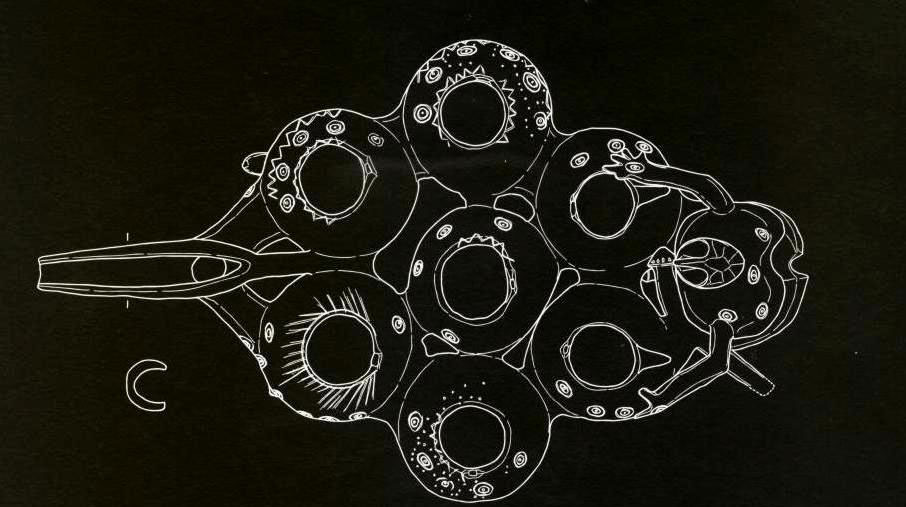

Yes it's incredibly hard for a modern person to relate to any of this, even though they might have religious beliefs derivative from such. I do consider the dating of these traditions as pre-dating the Sumerians by thousands of years and relating to the time of the first 'Fish-people'', as the cultic premise is based upon the star of the Fish or Enki as the primary source of wisdom.
I do think the Sumerians still fully understood the significance of what was involved but even they were losing that close link to nature and the skies through urbanization, the ancient plant and astrological lore and their curious union.


edit on Kam430109vAmerica/ChicagoMonday2030 by Kantzveldt because: (no reason given)
A little more on Tashmetu;
Let whom will thrust where he trusts,
As for us, our trust is in Nabu,
We give ourselves over to Tashmetu.
What is ours is ours: Nabu is our lord,
Tashmetu is the mountain we trust in.
There, bind fast, hitch up, bind your days to the garden and to the Lord,
Bind your nights to the exquisite garden,
Let my Tashmetu come with me to the garden,
Among the wise folk her place be foremost.
´May she she with her own eyes the plucking of my fruit,
May she hear with her own ears my birdsong,
May she see with her own eyes, may she hear with her own ears!
Say to her, to her to her of the wall, to Tashmetu,
: ..., take your place in the sanctuary,
: May the scent of holy juniper fill the dais.
The sacred garden of Nabu and Tashmetu
Lady at the window
So complex association were Inanna/Ištar = Kilili = Nanaya = Tašmetu as the personification of wisdom, that wisdom also related to the cunning usage of plants of the sacred garden and also related to healing capacity, her earlier consort was Dumuzid rather than Nabu, or the Divine child related to the swine constellation which the Greeks later saw as Delphinus, Damu also being a God of healing
Damu
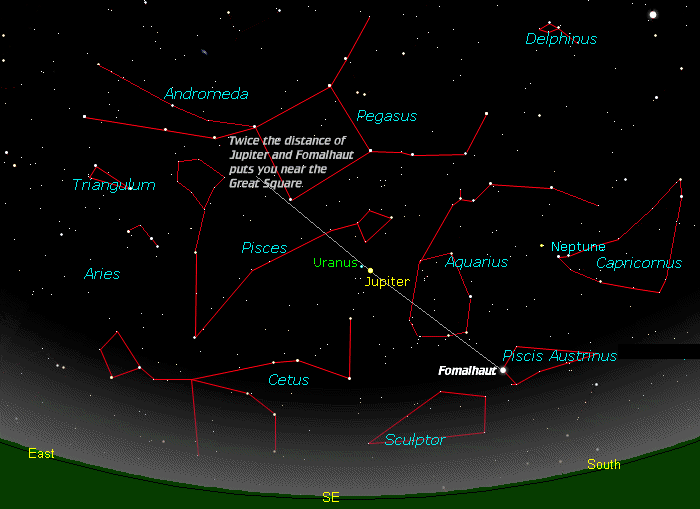
The whole cult of the secret garden is probably somewhat over complicated, in origin it was simply an aspect of the cult of Inanna searching a particular sort of enlightenment with her brother Utu, the sun.
Let whom will thrust where he trusts,
As for us, our trust is in Nabu,
We give ourselves over to Tashmetu.
What is ours is ours: Nabu is our lord,
Tashmetu is the mountain we trust in.
The first millennium incantation corpus known as Beschwörungsrituale an Ištar und Dumuzi describes the goddess or the demoness Kilili as “the woman leaning from the window” (ša apāta ušarru). Even though Kilili is commonly identified as “a female demon,” she is, however, clearly equated with Ištar (rabītu Ištar) in this same context . In these rituals that feature both Ištar and Dumuzi, and in which Ištar is able to cure and inflict disease, she acts as the leader of the demons, and occasionally also becomes identified as a demon herself. Despite being a female demon, Kilili is connected with wisdom.
There, bind fast, hitch up, bind your days to the garden and to the Lord,
Bind your nights to the exquisite garden,
Let my Tashmetu come with me to the garden,
Among the wise folk her place be foremost.
´May she she with her own eyes the plucking of my fruit,
May she hear with her own ears my birdsong,
May she see with her own eyes, may she hear with her own ears!
A similar epithet “the wisest of the wise” appears in the list of love songs and therefore is likely to refer to Inanna/Ištar: “the wisest of the wise (women), overseer of the people.” Thus it is evident that the female at the window is the wise Ištar, identified with the wise Kilili. Inanna is equated with a prostitute who, like a ghost, slips through or leans from a window like a ghost: “As a prostitute you go down to the tavern, and (there) you will turn into a ghost leaning from the window”
A window, a doorway, a wall and a mountain all create a link between the two worlds: the human and the divine. The ultimate link here is, of course, the goddess herself representing the divine world with which the human individual seeks to unite. Therefore, the motif of the beautiful woman or a goddess looking through the window as if she was waiting for someone can be seen as an iconographical representation of an opening to the divine world.
Say to her, to her to her of the wall, to Tashmetu,
: ..., take your place in the sanctuary,
: May the scent of holy juniper fill the dais.
The sacred garden of Nabu and Tashmetu
Lady at the window
So complex association were Inanna/Ištar = Kilili = Nanaya = Tašmetu as the personification of wisdom, that wisdom also related to the cunning usage of plants of the sacred garden and also related to healing capacity, her earlier consort was Dumuzid rather than Nabu, or the Divine child related to the swine constellation which the Greeks later saw as Delphinus, Damu also being a God of healing
Damu is a healing deity credited both as asû "healer" and āšipu, "exorcist TT ", which says as much about the close link between the two professions as about the deity's capabilities. Accordingly, Damu accompanies his mother Gula/Ninkarrak in incantations but is also credited as healer in his own righ
In Mesopotamian religion, a Sumerian vegetation god and city god of Girsu on the Euphrates River.
He was especially associated with the flowing of sap in the spring. His name means “the child,” and his cult centred on the lamentation and search for him. Damu’s cult influenced and later blended with that of Dumuzi the Shepherd, a Sumerian deity of the grassland people. Damu was also the name of a goddess of healing.
Ancient god In Mesopotamian religion, Sumerian deity, city god of Girsu, (Lagash) east of Ur in the southern orchards region. Damu, son of Enki (Ea), was a vegetation god, especially of the vernal flowing of the sap of trees and plants. His name means “The Child,” and his cult—apparently celebrated primarily by women—centred on the lamentation and search for Damu, who had lain under the bark of his nurse, the cedar tree, and had disappeared. The search finally ended when the god reappeared out of the river.
Damu

The whole cult of the secret garden is probably somewhat over complicated, in origin it was simply an aspect of the cult of Inanna searching a particular sort of enlightenment with her brother Utu, the sun.
Inana speaks "My brother, awe-inspiring lord, let me ride with you to the mountains! Lord of heaven, awe-inspiring lord, lord, let me ride with you to the mountains;
I am unfamiliar with womanly matters, with ....... I am unfamiliar with womanly matters, with sexual intercourse! I am unfamiliar with womanly matters, with kissing! I am unfamiliar with sexual intercourse, I am unfamiliar with kissing!
"Whatever exists in the mountains, let us eat that. Whatever exists in the hills, let us eat that. In the mountains of herbs, in the mountains of cedars, in the mountains of cedars, the mountains of cypresses, whatever exists in the mountains, let us eat that.
Another fascinating thread, as always! Babylonian and Sumerian culture is quite different from most, and I find it difficult to get a decent
understanding of it, especially given the layers upon layers of symbolism. You make an excellent teacher, though, Kantzveldt.
a reply to: AdmireTheDistance
Yes it's interesting to look for what passes as Western Mystery tradition in Mesopotamia but not easy as even there one finds the element of secrecy and only indirect reference and the greater distance in time, but there does appear to have been a quite specific formulation with regards to a return via the river that emerges from the underworld, symbolized by the return of the mid-winter sun, but there could well be other elements involved in their notion of return even other than that of resurrection.
Yes it's interesting to look for what passes as Western Mystery tradition in Mesopotamia but not easy as even there one finds the element of secrecy and only indirect reference and the greater distance in time, but there does appear to have been a quite specific formulation with regards to a return via the river that emerges from the underworld, symbolized by the return of the mid-winter sun, but there could well be other elements involved in their notion of return even other than that of resurrection.
edit on Kam430110vAmerica/ChicagoTuesday2130 by Kantzveldt because: (no reason given)
new topics
-
whistleblower Captain Bill Uhouse on the Kingman UFO recovery
Aliens and UFOs: 3 hours ago -
1980s Arcade
General Chit Chat: 5 hours ago -
Deadpool and Wolverine
Movies: 6 hours ago -
Teenager makes chess history becoming the youngest challenger for the world championship crown
Other Current Events: 7 hours ago -
CIA botched its handling of sexual assault allegations, House intel report says
Breaking Alternative News: 8 hours ago -
Lawsuit Seeks to ‘Ban the Jab’ in Florida
Diseases and Pandemics: 10 hours ago
top topics
-
Lawsuit Seeks to ‘Ban the Jab’ in Florida
Diseases and Pandemics: 10 hours ago, 20 flags -
Starburst galaxy M82 - Webb Vs Hubble
Space Exploration: 12 hours ago, 12 flags -
CIA botched its handling of sexual assault allegations, House intel report says
Breaking Alternative News: 8 hours ago, 8 flags -
The Superstition of Full Moons Filling Hospitals Turns Out To Be True!
Medical Issues & Conspiracies: 14 hours ago, 8 flags -
IDF Intel Chief Resigns Over Hamas attack
Middle East Issues: 17 hours ago, 6 flags -
whistleblower Captain Bill Uhouse on the Kingman UFO recovery
Aliens and UFOs: 3 hours ago, 6 flags -
15 Unhealthiest Sodas On The Market
Health & Wellness: 12 hours ago, 5 flags -
Teenager makes chess history becoming the youngest challenger for the world championship crown
Other Current Events: 7 hours ago, 3 flags -
Deadpool and Wolverine
Movies: 6 hours ago, 3 flags -
1980s Arcade
General Chit Chat: 5 hours ago, 3 flags
14
